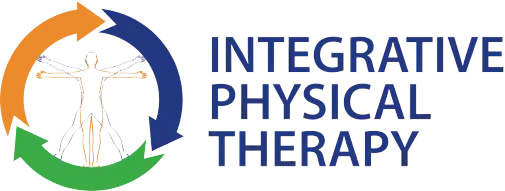Plantar fasciitis is a common condition that affects the heel and foot, causing pain and discomfort. It affects the plantar fascia, which is a thick band of tissue that runs across the bottom of the foot, connecting the heel bone to the toes. The plantar fascia provides support to the arch of the foot and helps to absorb shock when walking or running. When the plantar fascia becomes inflamed, it can cause pain and discomfort, especially near the heel.
There are various treatment options for plantar fasciitis, including stretching exercises, physical therapy, and orthotics. However, the treatment option that has gained popularity in recent years is dry needling. Dry needling is a form of therapy that involves inserting thin needles into trigger points in the body to relieve pain and improve function. Keep reading to learn about dry needling therapy in Jacksonville, FL.
What Is Dry Needling For Plantar Fasciitis?
Dry needling for plantar fasciitis involves the insertion of thin needles into specific trigger points in the foot and heel. It is called “dry” needling because no medication or solution is injected into the body during the treatment. Dry needling has been used for many years to treat musculoskeletal conditions such as plantar fasciitis.
Trigger points in the foot are areas of tight or knotted muscles that can cause pain and discomfort. During a dry needling session, a trained therapist inserts thin, sterile needles into the trigger points. The needles used in dry needling are different from those used in acupuncture, as they are inserted directly into the trigger points rather than along meridians. By inserting the needles into these trigger points, the physical therapist can release tension and improve blood flow in the foot, which in turn can help to reduce pain and inflammation in the plantar fascia.
Dry needling is often used in conjunction with other treatments for plantar fasciitis, such as stretching exercises and physical therapy. A physical therapist can assess the foot to determine the most suitable combination of treatments. The combination of these treatments can help to improve flexibility, reduce pain, and improve overall function of the foot.
Does Dry Needling Help Plantar Fasciitis?
So, does dry needling help plantar fasciitis? In Jacksonville, FL, many patients have experienced relief from their symptoms after undergoing dry needling treatment. One of the benefits of dry needling for plantar fasciitis is that it is a minimally invasive treatment option. Unlike surgery, there are no incisions or scars, and the recovery time is minimal. Patients can typically return to their normal activities within a few days of the procedure.
Another benefit of dry needling is that it is a relatively quick procedure. Most sessions last between 15 and 30 minutes, depending on the number of trigger points being targeted. Patients may require several sessions to achieve optimal results, but the benefits can be seen relatively quickly.
How Dry Needling For Plantar Fasciitis Works
Dry needling for plantar fasciitis works by targeting trigger points in the muscles and fascia of the foot and calf. This can help provide immediate symptom relief for patients. The proposed mechanism of action for dry needling includes:
- Elicits a local twitch response: Trigger points are small knots or areas of tightness within the muscle tissue that can cause pain, stiffness, and other symptoms. Releasing these trigger points can help to alleviate painful symptoms and promote healing. Dry needling causes a local “twitch response” (a reflex in the muscles) to release these trigger points, helping to alleviate painful symptoms and improve muscle health.
- Improves blood flow: Sustained contraction triggered by dry needling may change blood flow in the treatment area. By stimulating the muscle, dry needling is thought to promote vasodilation in small blood vessels, improving muscle blood flow and oxygen delivery. Better blood flow and resource availability in the muscle can help promote healing and muscle performance.
- Changes the nerve signals: Dry needling may reduce sensitivity to pain by changing the nerve signals in the treatment area. As nerve signals are responsible for transmitting pain information, this in turn can provide symptom relief from plantar fasciitis.
How Many Dry Needling Sessions Are Needed For Plantar Fasciitis?
The number of dry needling sessions required for plantar fasciitis can vary depending on the severity of the condition and the patient’s response to treatment. Typically, a course of treatment involves several sessions over a period of weeks or months. The therapist may also recommend exercises and other treatments to complement the dry needling.
Does Dry Needling For Plantar Fasciitis Hurt?
While dry needling can cause some discomfort during the insertion of the needle, many people find the treatment to be relatively painless. The therapist will work to ensure that the needle is inserted into the correct location and at the appropriate depth to target the trigger point effectively. After the treatment, some people may experience mild soreness or bruising in the treated area, but this usually resolves quickly.
Dry Needling Calf-Related Plantar Fasciitis
The calf muscles play an important role in plantar fasciitis, as the tendons of the muscles combine into the Achilles tendon, which in turn connects to the heel bone. Tightness in the calf muscles can lead to increased strain on the plantar fascia, leading to inflammation and pain. This is common in running or jumping sports, such as basketball and volleyball.
Dry needling can be used to target trigger points in the calf muscles, which can help to release tension and improve blood flow in the area. This can in turn reduce strain on the plantar fascia and alleviate pain and discomfort from plantar fasciitis. With the proper treatment, athletes may experience an improvement in performance as well.
Dry Needling With Electrical Stimulation For Plantar Fasciitis
Dry needling for plantar fasciitis is typically performed by a trained therapist who has experience in this technique. This helps maximise the benefits whilst minimising the risk of any side effects. Dry needling may be combined with other therapies, such as electrical stimulation, to further enhance its effectiveness.
Electrical stimulation is a treatment technique where therapeutic electrical frequencies are applied to the affected area. When used in combination with dry needling, this can augment the benefits and improve health outcomes for the patient.
The trained therapist will insert the needles into specific trigger points in the foot and calf muscles, and may also use electrical stimulation to further enhance the effectiveness of the treatment. This involves attaching electrodes to the needles and using a small electrical current to stimulate the muscles and nerves in the foot. As this is a specialized technique, the therapist must have more advanced training in performing dry needling with electrical stimulation for plantar fasciitis or any other condition.
Side Effects Of Dry Needling For Plantar Fasciitis
Dry needling is generally considered safe when performed by a trained and licensed therapist. However, the dry needling technique for plantar fasciitis may result in some side effects.
The side effects of dry needling for plantar fasciitis may include:
- Tenderness or discomfort in the foot
- Bruising at the site of the needle insertion
- Bleeding at the insertion site
In rarer cases, there may be complications including more extensive bleeding, infection, nerve damage, and allergic reactions. It is important that all patients considering dry needling for plantar fasciitis discuss the risks and benefits with their healthcare provider.
Limitations Of Dry Needling
In addition, patients considering dry needling for plantar fasciitis should also be aware of the limitations of the procedure. While dry needling can provide relief from the symptoms, it is not a cure for the underlying condition. Patients may still need further treatment or to make lifestyle changes to manage the condition.
Furthermore, not all patients may be candidates for dry needling, and the effectiveness of the treatment can vary depending on the patient’s specific condition and the skill and experience of the practitioner performing the procedure. Therefore, anyone considering dry needling for plantar fasciitis in Jacksonville should consult with a licensed healthcare provider. At Integrative Physical Therapy, our physical therapists are trained and experienced in the technique and can determine if dry needling is a suitable treatment option.
So, Can Dry Needling Help Plantar Fasciitis?
Yes! Dry needling is a good treatment option for plantar fasciitis. Whilst dry needling doesn’t cure plantar fasciitis, the effectiveness of dry needling for plantar fasciitis means that it can greatly improve symptoms and function.
It is minimally invasive, relatively quick, and can provide relief from pain when performed by an experienced physical therapist. Before undergoing any treatment, patients should discuss the risks and benefits with their healthcare provider and understand they may need other treatments to fully manage the condition.
If you are looking for relief from the symptoms of plantar fasciitis, consider getting in touch with our experienced team of physical therapists at Integrative Physical Therapy for dry needling in Jacksonville, FL.
References
Physiopedia. Dry Needling. Available from: https://www.physio-pedia.com/Dry_needling
National Institutes of Health. Dry needling: a literature review with implications for clinical practice guidelines. Available from: https://www.ncbi.nlm.nih.gov/pmc/articles/PMC4117383/#:~:text=Dry%20needling%20is%20an%20invasive,the%20muscle%20known%20as%20TrPs

